2 Toed Sloth Funny Sloth Memes
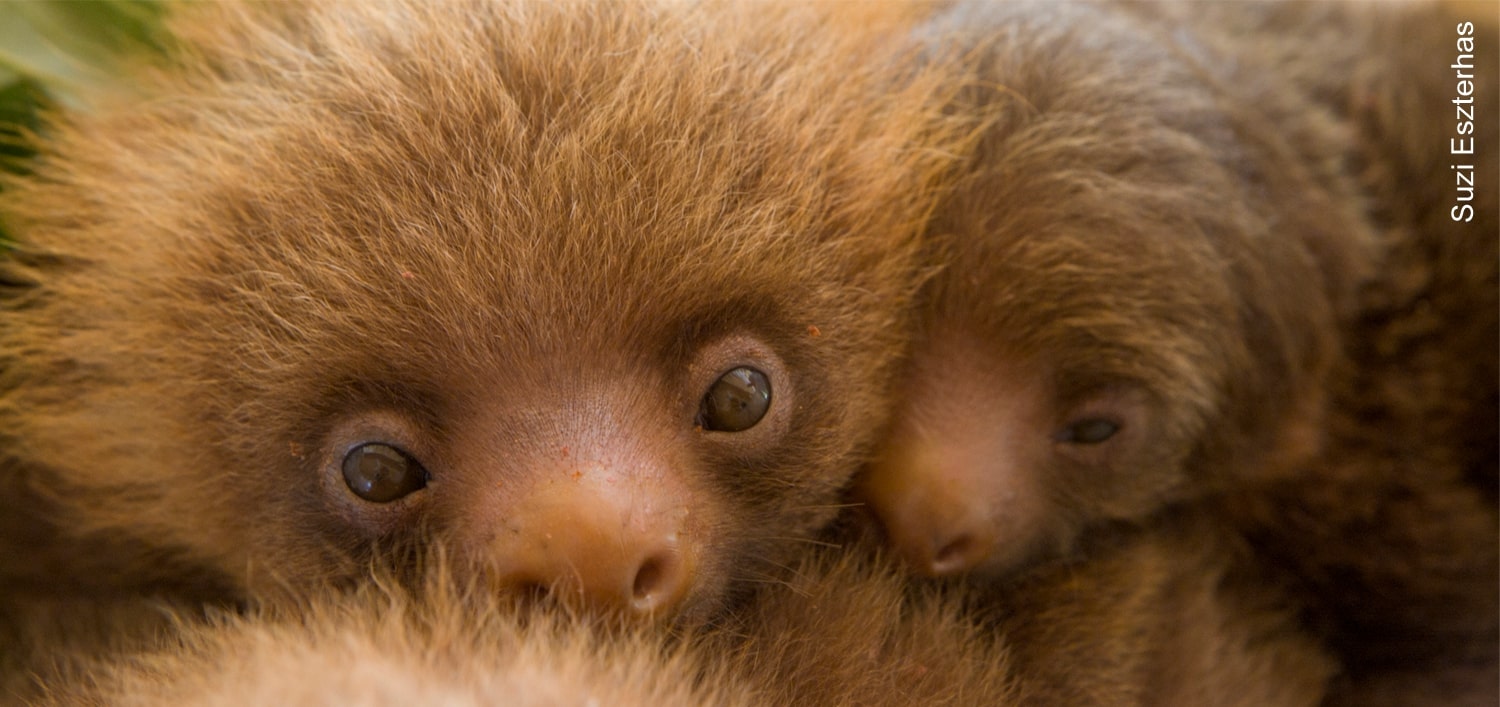
Why are sloths one of the cutest animals in the world?
Why are sloths so darn cute? Is it the little button eyes, the round, fuzzy head, or perhaps the adorable pink tongue? Whatever it is, there's no denying it: sloths are so cute they just make your heart melt.
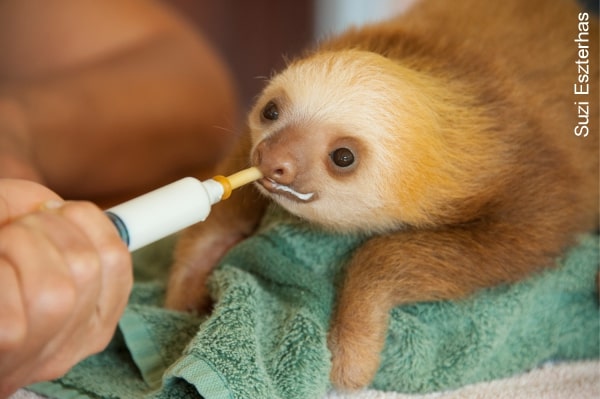
"Cute" is a word that means different things to different people. Scientists who study such things have shown lots of pictures to people to see what kind of faces ranked highest on the cuteness scale, and it turns out that we like faces that have big round heads, large eyes, and small chins. Other features might be called beautiful, lovely, or pretty, but it is usually these traits that make someone cute.
Why are sloths cute?
We find other animals besides baby humans quite adorable also. Many mammals share these features, and none more so than our domesticated friends, especially kittens and puppies. It's possible that domesticated cats and dogs evolved especially cute offspring so that any nearby humans would be more likely to take care of them. After all, who can resist those woeful puppy-dog eyes?
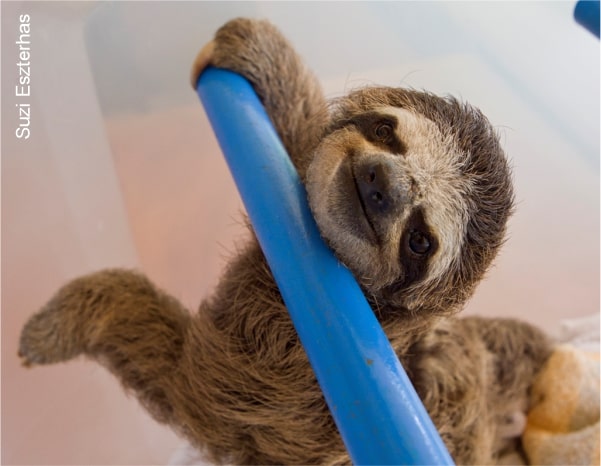
Sloths, however, are not domesticated animals, so it's a bit of a mystery as to why we find them so adorable. Perhaps they evolved to look cute to other sloths, and we humans just happen to agree!
-
Read More: Baby sloths, everything you always wanted to know
It might also be that humans like to anthropomorphize animals we come in contact with, and project our own interpretations onto sloths. The color of the fur around the three-fingered sloths' faces makes it look like they have a permanent smile, which looks very endearing! They don't have huge eyes, but they do have very round eyes, and their round faces make it look like they have big foreheads with receding chins, which is spot-on for scientifically cute.
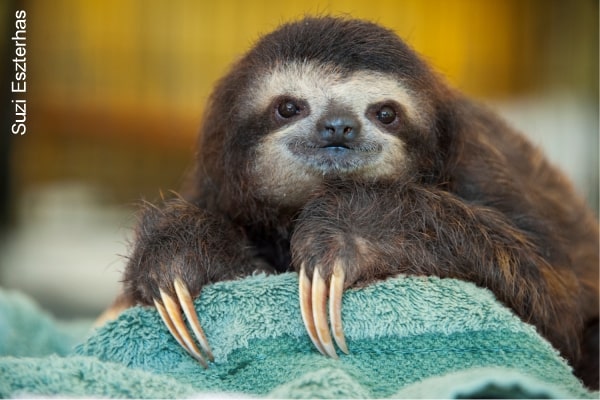
We seem biologically programed to seek out cute things
The internet is full of pictures and videos of animals (and humans) being cute, illustrations are specifically drawn with the features mentioned above, and even Mickey Mouse has gotten cuter over the years.
We send each other GIFs of creatures being cute, download wallpapers and backgrounds for our computer of adorable things that cheer us up, and stamp clipart of cartoon smiley faces on social media.

-
Read More: The True Stories Behind These Famous Baby Sloth Photos
We make fan art, illustrations, and drawings, and Japanese even has the word "kawaii", usually used in anime, that refers to an entire culture of things that are lovely, cute, and vulnerable. Does this make us happy? It must, or else why would we put it across so much of our daily life?
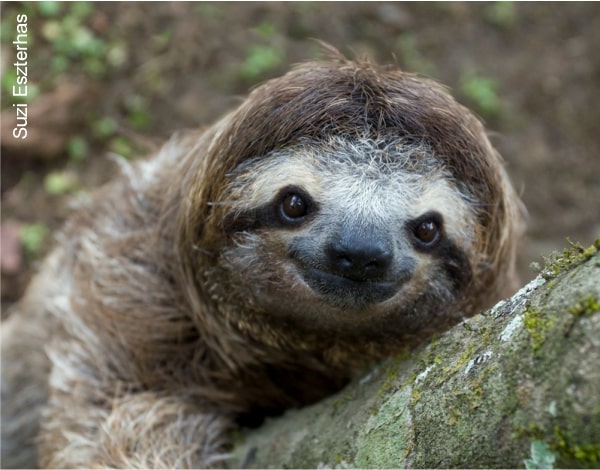
Cuddling and hugging are cuteness
It's not just looks that we are attracted to. Actions can make us feel just as warm and fuzzy and sensitive as a cute face. Soft snuggles, cuddles, and hugs elicit that same feeling of tenderness that we get when we look at babies and baby animals.
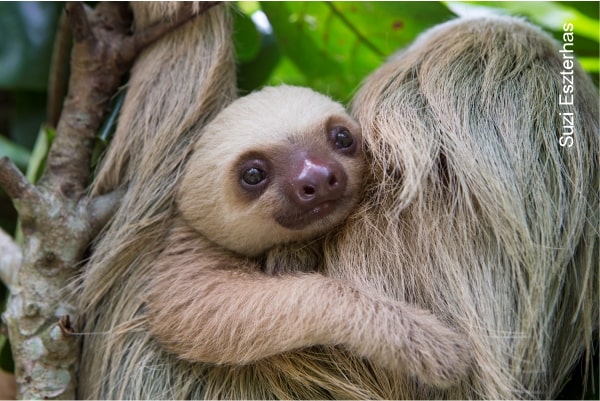
Perhaps this is where sloths really excel on the cuteness scale: those furry arms just seem made for hugging! The way they sit on the trunks of trees like they are just cuddling right in for a nap makes it seem like they would be so much fun to snuggle.
-
Read More: Why Sloths do not make good pets
Yes, sloths are cute, but we can't hug them
It's important to remember that just because a sloth likes to snuggle a tree does not mean they want to snuggle us! Except for raising their young, sloths are solitary, wild animals, and they don't need humans to go around trying to hold them.Never touch a wild sloth, and don't patronize organizations that allow sloths to be held by humans.
-
Read More: Sloth Encounters Experiences, the Good, the Bad, and the Ugly
Let sloths be cute as nature intended them to be: from high up in the trees in their native jungle, and if you want to help them out, don't hold their hand, just make sure they continue to have a home to be cute in.

How do I love thee?
Supporters, how do I love thee? Oh, let me count the ways!
I love your Urban Tracking Team, that finds me every day.
I love you for your green-roped bridges that connect the canopy,
I love you for your camera traps that take pictures of me!
I love to wander safely about my jungle lands,
So thank you for the education that shapes the future's hands.
I love it when the tourists will stop and respect my space,
And I love you for the signs you make to put them in their place.
Supporters, how do I love thee? Oh, let me count the ways!
I love your social media and the awareness that you raise!
I love your Slothopedia, that replaces myth with truth,
And I love it when you rescue me from the pet trade and abuse.
I do NOT love your angry dogs, that bark and bite and rend,
But I love it when you teach them better ways to be my friend.
I love it when your gardens grow some food for me to eat,
And I love it when you plant some trees so that the branches meet.
Supporters, how do I love thee? Oh, let me count the ways!
I love your eco-tourism, your hotels, and your cafes.
I love it when the powerlines are safe for me to cross,
And when you show illegal loggers who really is the boss.
I love to be adopted (not literally, of course)
And to know my little grandsloths can count on your support.
Most of all I love your kindness and the way you do your part
To share with me this great green world that I love with all my heart.

-Kokomo Sloth
Sloth Love Advisor

Kokomo
Off the Caribbean breeze, there's a sloth called Kokomo
He's where we wanna go, to get away from it all.
Footprints in the sand, three claws on his climbing hand,
You'll be falling in love to the rhythm of this forested land
Down with Kokomo
Sea almonds, beach palms and–Oooh I got sloth calmin'!
Green pipas, vine creepers, come on I wanna meet ya
On the playa, bonfire, baby get me higher.
Oh, I want to go down like Kokomo,
He gets there fast but then he takes it slow–
Go down like Kokomo.
So unique, that three-fingered masked mystique
He puts out in the trees, his boudoir is the canopy,
And by and by he defies the laws of gravity.
Hanging upside down, he can see all the way around,
That dreamy smile on his face gives me shivers all over the place–
Go down like Kokomo.
Sea almonds, beach palms and–Oooh I got sloth calmin'!
Green pipas, vine creepers, come on I wanna meet ya
On the playa, bonfire, baby get me higher.
Oh, I want to go down like Kokomo,
He gets there fast but then he takes it slow–
Go down like Kokomo.
He's moved on since, I want to catch a glimpse
Everybody knows a sloth called Kokomo,
Now if you wanna go and get it on real slow
Go down like Kokomo.
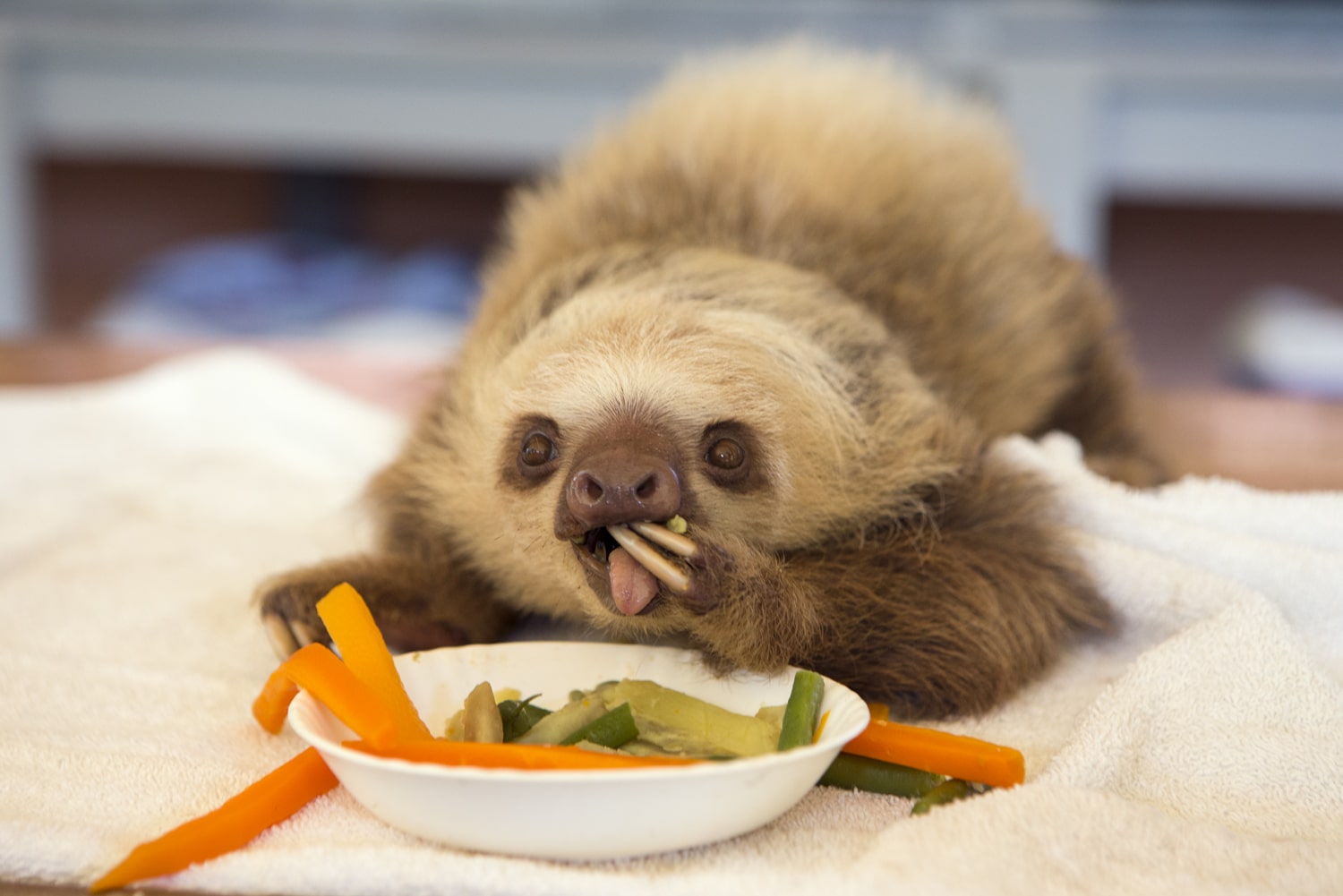
2021 best sloth memes
Some experts consider memes an important form of communication. No doubt you also know someone who speaks in memes (millennials, we're looking at you) and we love memes too!
We've made a selection of the funniest sloth memes from 2021 for your personal amusement, or for sharing with your meme-obsessed, sloth-nerd friends.
1. Red Flags
Red flags are the signs that warn you that that person might not be the right one for you…

…especially if they like to go to petting zoos and hug sloths!
2. Khaby Lame reacts to people interacting with sloths:

What can we say, he gets it.
.
3 . The Mika song from Tik Tok
…but slothified:

.
4 . This is not fine
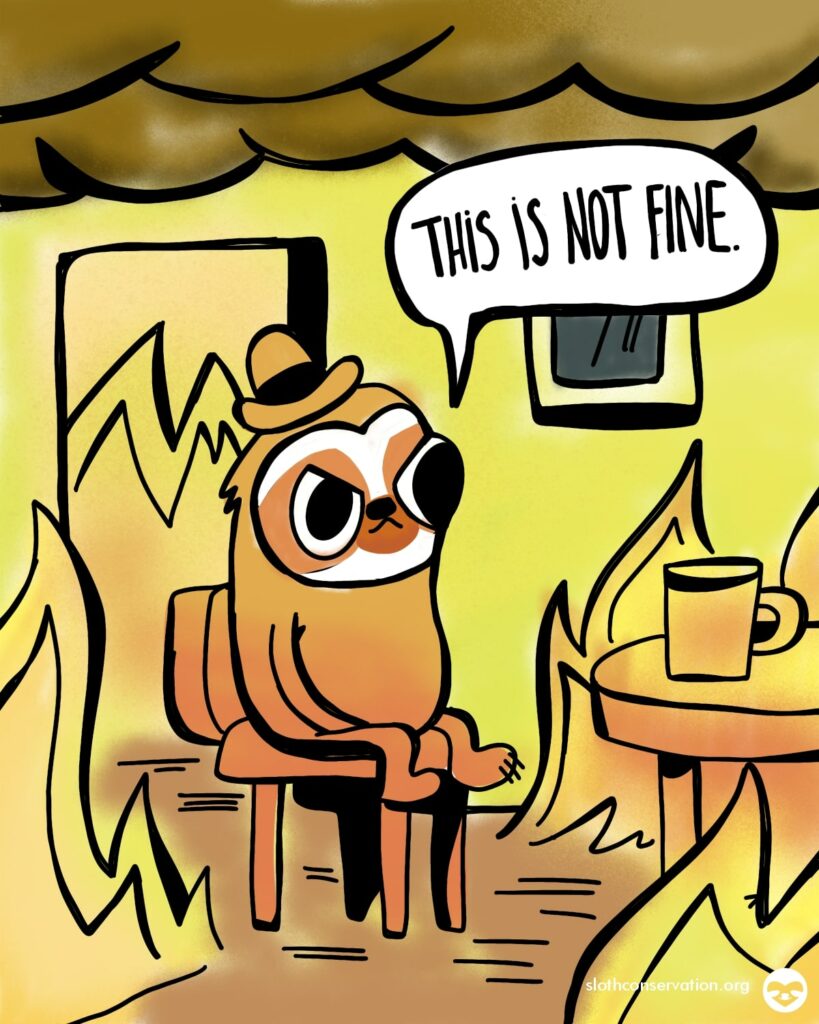
This was the exact reaction of all of us at SloCo after the IPCC report on global warming officially told us what we already know:
Human activities are affecting the climate and we're tired of pretending nothing is happening.
.
5. Not really a meme, but we had to include it anyway.
This comic from artist Liz Climo really blew up on our social media this Halloween:
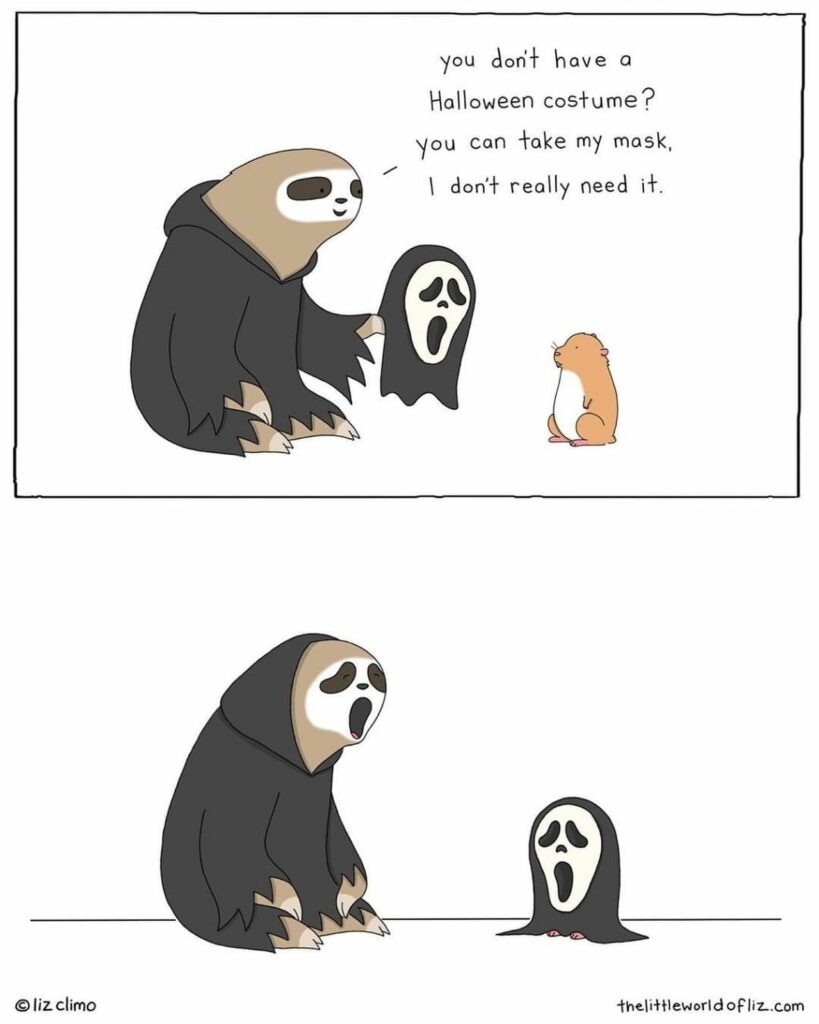
6. You've heard of the elf on the shelf…

…the moth on the sloth!
.
7. What kind of holiday sloth are you?
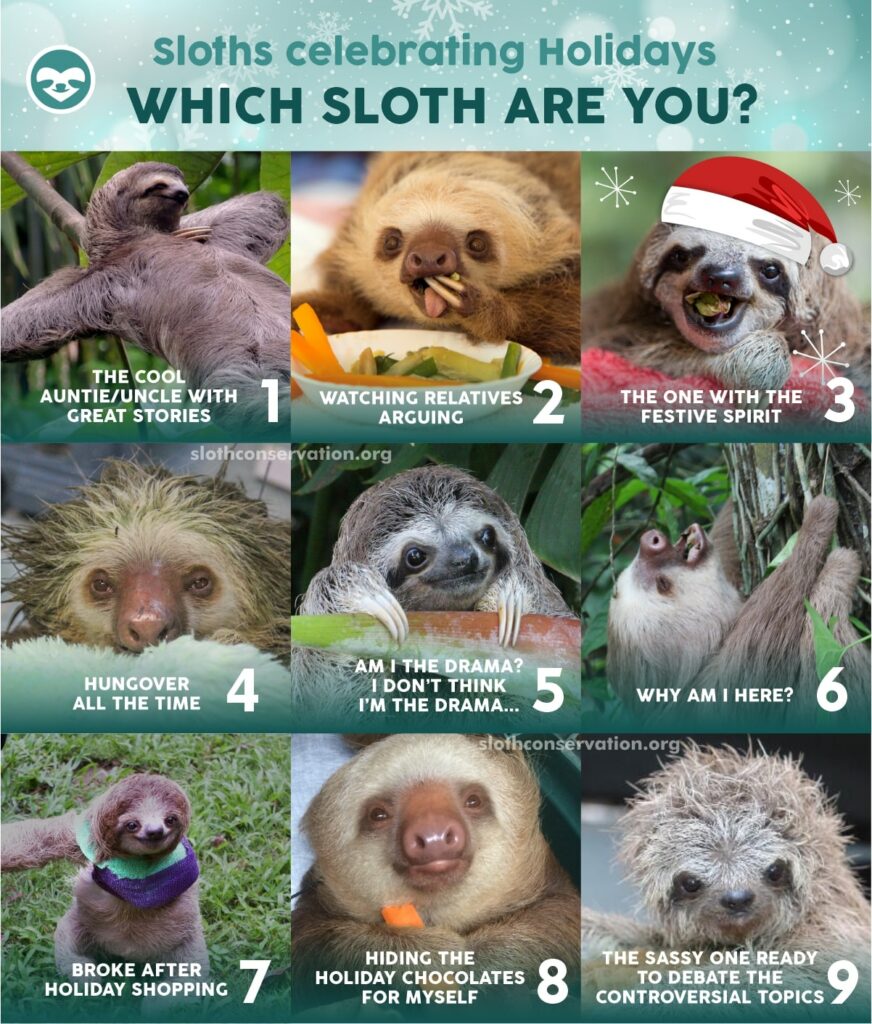
We're definitely number 9 when it comes to the discussion about sloths not having toes in their hands and why the correct name is 'three-fingered sloth", and OMG, don't even get us started on the subject of power lines…
.
8. Again, not really a meme, but have you seen these taxidermied sloths in the Natural History Museum?
They are…something else. We have a whole blog about it in case you just can't look away.

- Read more: Sloth at the museum
9. Abbey Road sloth
To celebrate The Beatles day

10. Bonus


Top sloth blogs from 2021
It's the end of the year again—time to reflect, reorganize, and recap the best of 2021. So here are our top 10 blogs, articles, photos, and stories.
"But wait!" you say, "How do I know these are really the best? Maybe you're trying to pawn off some substandard content on me! I'm a discerning reader, you know. My time is valuable!"
We know! These posts have been selected according to very stringent internal standards, such as by monitoring which articles got the most web traffic this year. Our readers have voted with their clicks, and the results are in. Enjoy!
1. Slothopedia:
This is a project still in its infancy, but it is live and it is here! We aim to make Slothopedia the largest and most scientifically accurate source of sloth information on the internet. For sloth lovers, children, grad students, or just curious people, the Slothopedia will have it all!
We launched the main page during Sloth Month—October–and will be adding new articles, revising and expanding it during 2022.

Visit Slothopedia
2. Baby sloths: everything you always wanted to know!
A few months ago you could Google "baby sloth" and SloCo was not even in the first 40 pages of search results! (And everybody knows that nobody reads beyond the first page, never mind the other 39.)
This was unacceptable. We ARE the sloth experts, and we have a nearly encyclopedic collection of accurate, ethical sloth photos.
So we wrote the most amazing mega-post about sloth babies, and guess what? In a matter of weeks, with your help sharing and reposting, we're now in the top three! (Depending on which country you Google from.)
Click here and help us get that number even better, plus of course, getting your fill of sloth-adorableness.

Baby Sloths
3. Tracking Diaries
People love jungle adventures! Okay, they love to read about jungle adventures, preferably from a climate-controlled armchair with a drink nearby. Happily for you, we delivered on your wish, and here they are!
The tracking diaries are the chronicles of our tracking team in the field. In these blogs, you'll find a lot of sloth chasing, equipment failures, equipment theft, missing equipment, mud, swamps, barb wire fences, mosquitos, and all the cool stuff we love about studying sloths and doing science while walking in circles chasing erratic radio signals.
![]()
Tracking Diaries
.
4. Searching for the elusive maned sloths of Brazil
In March this year, we had the amazing opportunity to join professor Gastón Giné–one of the leading experts in the maned sloth research–in Brazil to help him tag and fit GPS backpacks to these endangered sloths in the Atlantic forest of Sapiranga Reserve.

Maned Sloths of Brazil
.
5. Three-fingered sloth adopts a two-fingered orphan
This was one of our most popular stories this year (although it was written at the end of 2020). Some local tour guides contacted us after they made an amazing observation: they found a case of spontaneous inter-species adoption, in the wild! The story is as heartwarming as it is astounding.

Three-fingered sloth adopts a two-fingered baby
.
6. A new national symbol
In this blog we explained how sloths became a national symbol for Costa Rica, what this means for conservation, how we were involved in developing this law, and how it improves the lives of sloths.
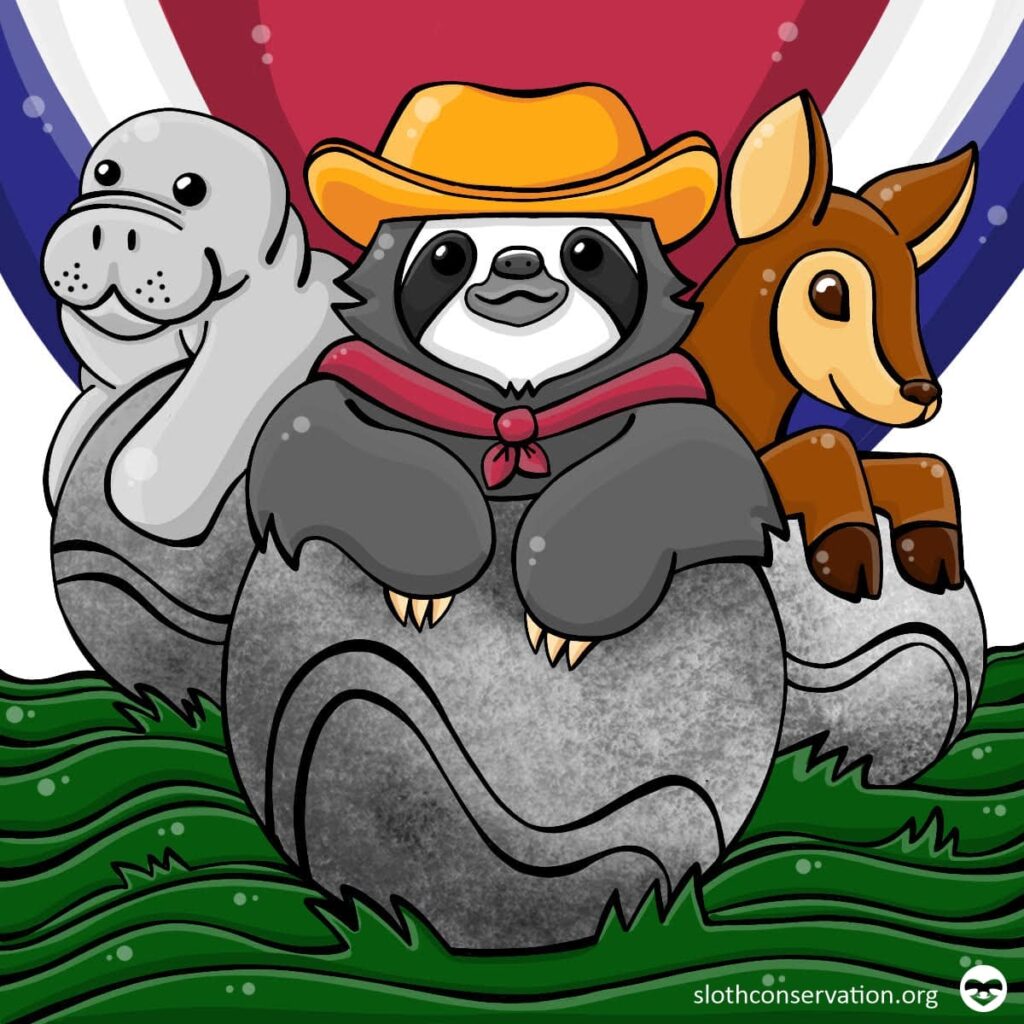
The Sloth: a new national symbol for Costa Rica
.
7. True stories behind these baby sloth photos
You have already seen this photo all over the internet. But have you ever wondered about the name and the story of the most famous sloth on the planet? Wonder no more! We have the truth!

Famous baby sloths!
.
8. Ancient sloths were not leaf eaters?
Apparently, some of them were "opportunistic omnivores", just like your friend who wants to become vegetarian but can't pass up on the free hot dogs at the company picnic.

Mylodon, oportunistic omnivore?
.
9. Arislothl & Slothocles: Taking Things Philosophically
William Hartston, the famous journalist, author, and sloth lover, wrote this entry (originally published on Beachcomber column for 11 September 2021 / Daily Express) about what can we learn from the philosophy of sloths.
Sloth Philosophy
.
10. Are humans the baddies?
According to one of the latest research articles on the subject, it turns out that we don't have giant sloths pooping avocados anymore because ancient humans hunted them to extinction some thousands of years ago… Oops. At least we still have the avocados.
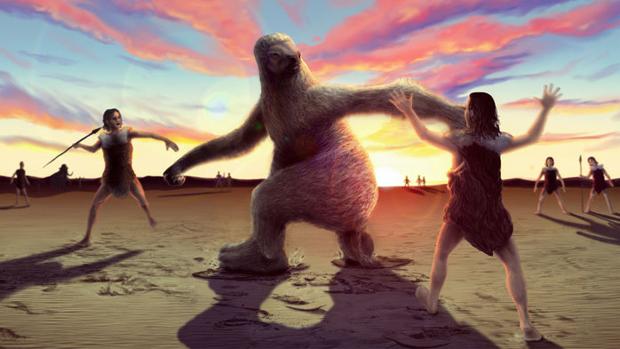
Did humans cause the extinction of the giant ground sloths?
-Cecilia Pamich
(Reviewed by Ames Reeder)
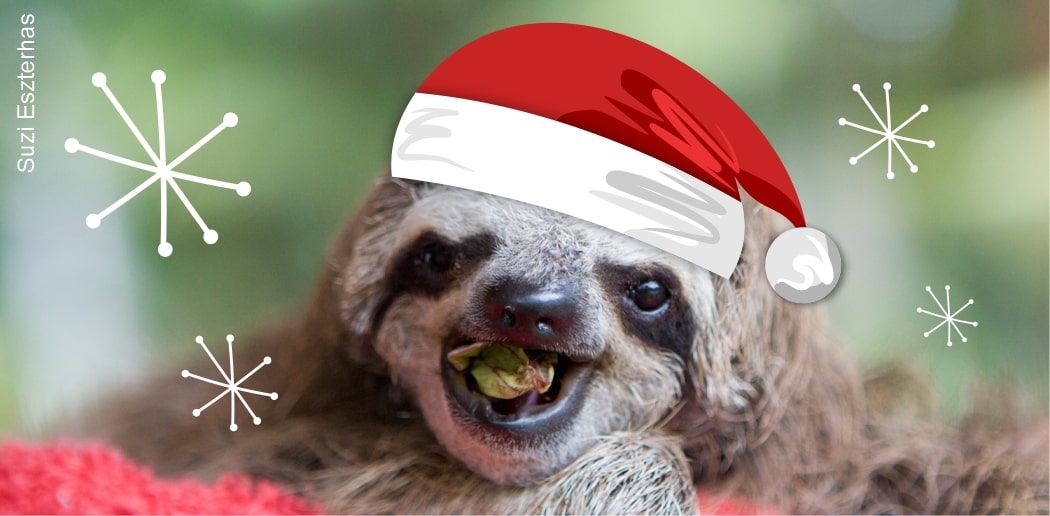
Holiday Sloths Memes
Which holiday sloth are you?
Aahhhh the holidays…. No matter how you celebrate, or what your relatives' personal drama is, it seems like we always find the same characters in the family gatherings. The real question is, which one are you? (Better yet, which one of these is Uncle Earl?)

You've heard of "Elf of the Shelf"…
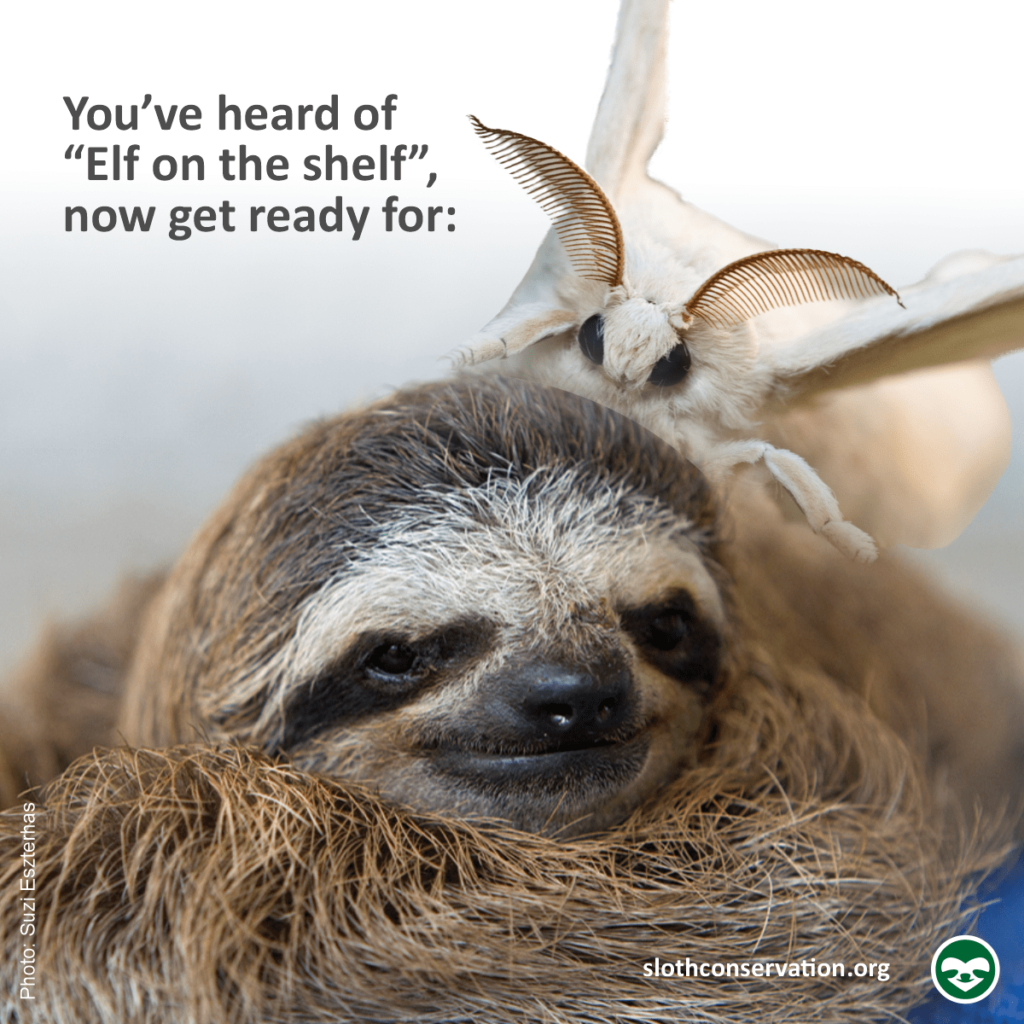

This is Sloth Tracking: a Spooky Poem
Boys and girls of every age,
Wouldn't you like to see something strange?
Come with us and you will see
Some weird things out while sloth tracking!
This is sloth tracking! This is sloth tracking!
The females scream while they're in heat
Every 15 minutes they will repeat.
This is sloth tracking
(we need more caffeine),
And the army ants just got my feet.

In our town, everybody screams,
At the things that bite while sloth tracking!
In this town that we call home
Everybody hails to the jungle song.
Fungus, mold,
And mushrooms too,
Pretty soon they'll be growing on you!

I left my machete under my bed,
Now the evil ortiga's all dripping red.
Of the golden orb spiders, we all beware
Because the six-foot webs are caught in my hair!
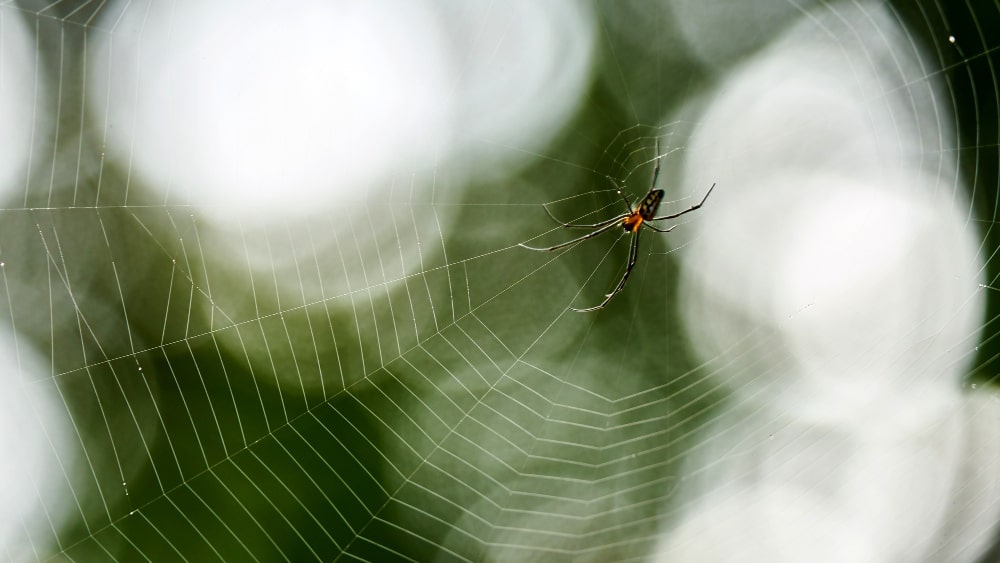
This is sloth tracking! This is sloth tracking!
Dead sloths hang from the jungle vines
(this sort of thing just happens sometimes).
This is sloth tracking,
Oh no, what's that thing,
It looks like a zombie covered in slime.
In our town, everybody screams
At the things, we smell while sloth tracking!
In this town that we call home
Everybody hails to the jungle song.
It eats all things!
It rusts our bikes!
It breaks our tech in the dead of night!

We wave our antenna all through the air,
But the signal's bouncing everywhere.
Follow it in circles till we disappear
I really can't believe that I volunteered.
This is sloth tracking! This is sloth tracking!
Monkeys howl from the canopy
Strange things crunch through the fallen leaves.
This is sloth tracking,
Lost in the deepest green,
And something growled from the dark unseen.
In this forest, everybody screams
But no one hears while you're sloth tracking!
In this wood that they call home
Everybody hails to the jungle song.
The humans here
Have much to fear
'Cause the wild things rule when the night draws near.
*A poem inspired by "This Is Halloween" from The Nightmare Before Christmas.
Here are some of our favorite spooky sloth facts and Halloween sloth puns (we apologize in advance for a couple of them).
-Ames Reeder
Sloth Tracking Team
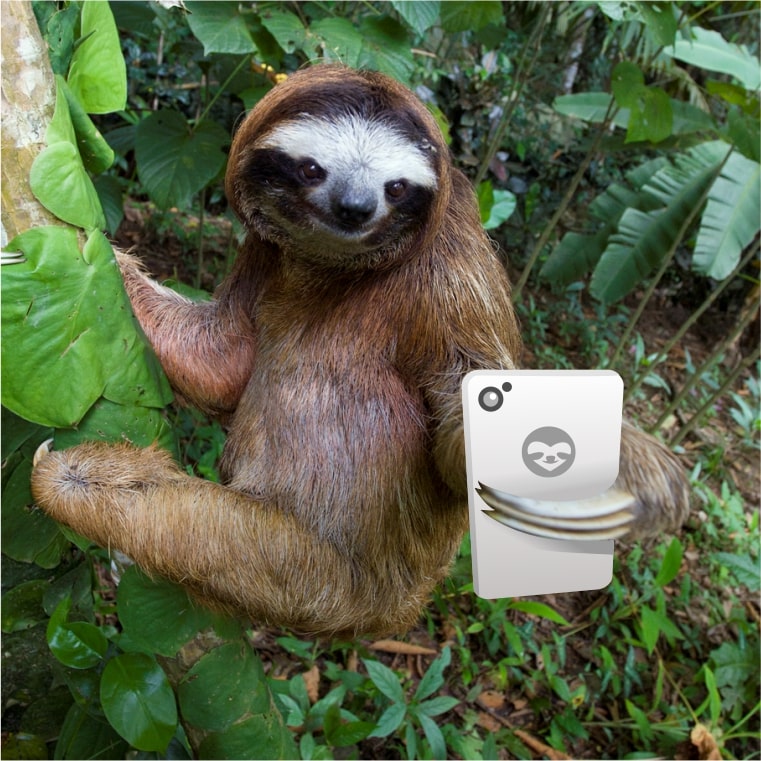
Arislothl & Slothocles: Taking Things Philosophically
GREAT excitement has followed my discovery, in an attic clean-out at Beachcomber Towers, of a manuscript believed lost for more than 2,000 years. Written by the ancient Greek philosopher Arislothl, it is nothing less than a complete version of his legendary masterpiece Lethargics outlining his highly influential views on the merits of nothingness.
Well, perhaps I exaggerate slightly when I say it was complete, as several pages were blank but for Arislothl's characteristic apology: "text to follow when I get round to it", but all the evidence suggests that he never did get around to it.
The pages of Lethargics that he completed, however, are enough to show that Arislothl's philosophical views were a clear advance on the treatise Indolentia Totalis, written by his friend and colleague Slothocles. Though the two men jointly ran the Inactivity School in Athens, there is no evidence that they ever met, despite apparent joint efforts to arrange an idleness symposium.
Arislothl's profound conclusions follow from a simple argument: that errors of commission are far more numerous and generally more serious than errors of omission. In other words, more and greater ills are caused by things we do than by things we don't do, so doing nothing is best. He argued that any action is preceded by a decision to act, and how to do it. Typically, any question has one right answer and many wrong answers, so there must be far more ways of doing something wrong than doing it right. He, therefore, extolled the virtues of indecisiveness.
Followers of Arislothl and Slothocles at the Inactivity School were also instructed in propitious modes of physical inactivity of which hanging upside down and doing nothing was considered to make the greatest contribution to mental health and general well-being.
Arislothl's wisdom seems particularly appropriate in current times. Climates wouldn't change, he said, if people didn't do anything; chaotic withdrawals of armed forces would be unnecessary if they didn't go anywhere in the first place; wars would never happen. He even pointed out that pandemics could not spread if we all hung upside down on our own in trees.
If you are wondering why I had never found this manuscript before, I must confess that I bought it in Cambridge in the 1940s in a boot sale run by the late Bertrand Russell. At previous such sales, Russell had sold only boots. When I pointed out to him that he took the term 'boot sale' too literally, he added a crate of apparent junk and I, therefore, felt obliged to bid for it.
-William Hartston
Beachcomber column for 11 September 2021 / Daily Express

Sloths in the museum
Recently we visited Costa Rica'sLa Salle Museum of Natural History , located in the capital, San José. With over 65,000 specimens on exhibition, this is one of the most complete collections in Latin America.
One of our favorite exhibits was the Entomology area, where you can see over 8,000 amazing butterflies, including many Blue Morpho Butterfly (Morpho spp.) samples. The famous Blue Morpho Butterfly shares its habitat with three-fingered sloths, depending on Sangrillo trees (Pterocarpus officinalis) for survival.
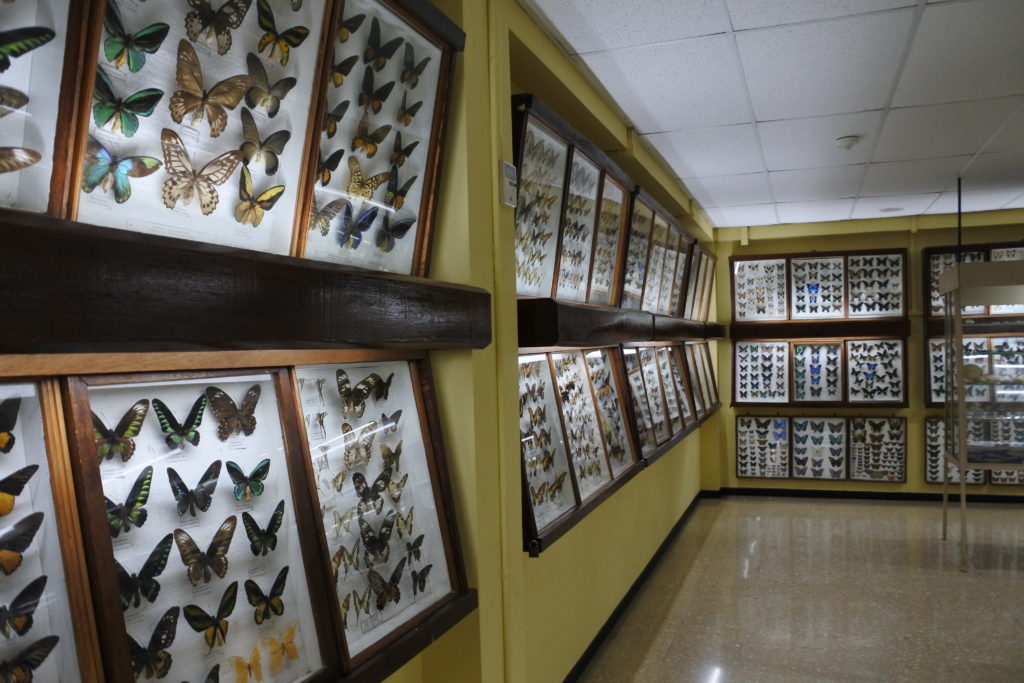
The museum has a variety of sections,the main attraction being the paleontology exhibit featuring towering dinosaur skeletons replicas, which are a favorite for all ages. Surrounding the dino enclosure are walls of brilliant minerals and prehistoric fossilized invertebrates (corals, arthropods), and vertebrates (fish, reptiles, birds, mammals).

The sloth, the bad, and the ugly.
The Mammals Exhibit has 400 taxidermy specimens of both local wildlife and non-native creatures.Taxidermy is the preservation of an animal's skin over an armature or stuffing.
Natural history museums all over the world exhibit taxidermic animals as education tools, a way to record aspects of species. The majority of specimens are likely to have been prepared decades ago.
But be prepared… these specimens are likely to look very different from any taxidermic animals you may have seen before…
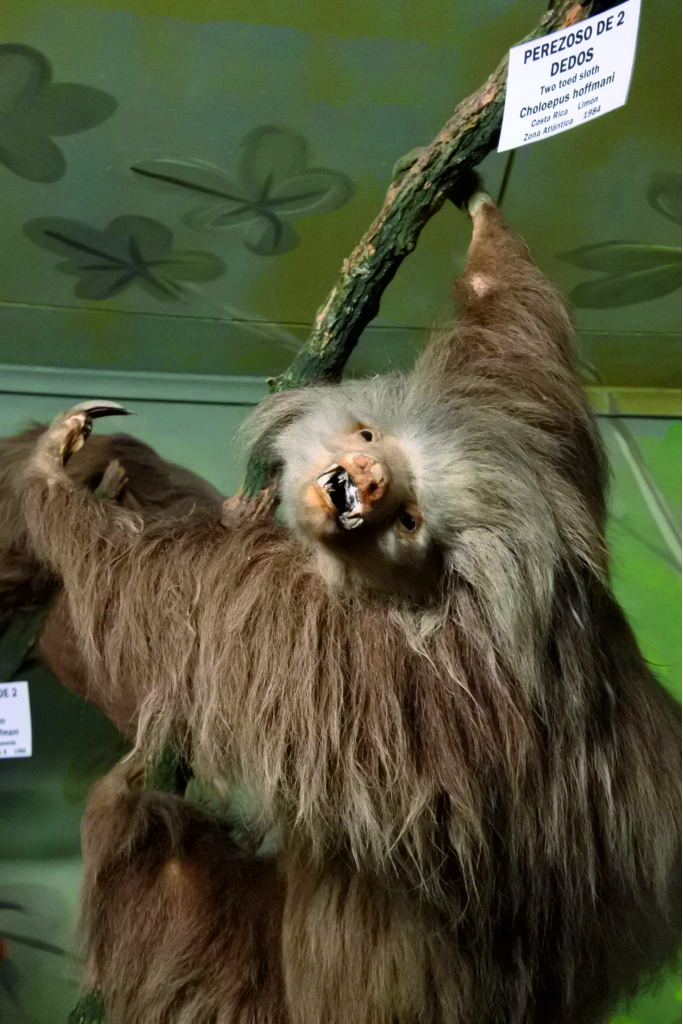
The word "taxidermy" comes from the Greek words "taxis" and "derma", which means "arrangement" and "skin". But seems like the arrangement of the skin of these animals hasn't worked out quite as expected…
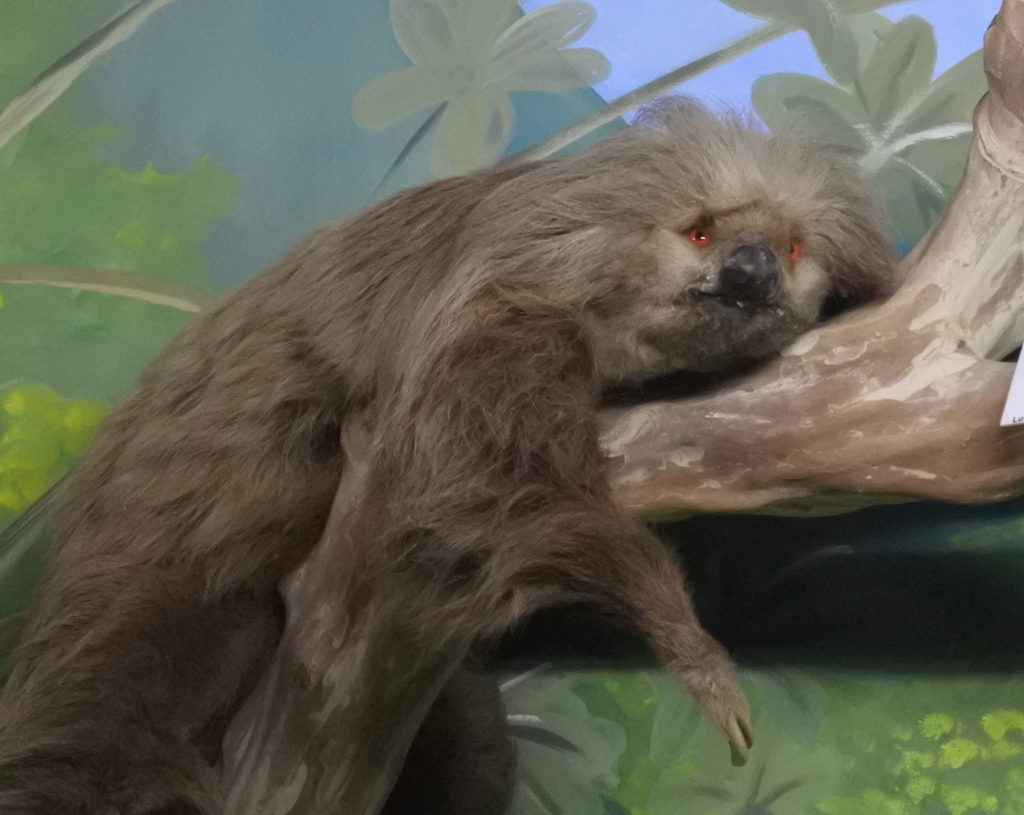
Aging is not good if you're a taxidermied sloth
Most of the specimens on display at the Natural History Museum of Costa Rica are very old – some having been prepared over four decades ago!
Taxidermy techniques have changed greatly over the years, and unfortunately, animal specimens who were subjected to the older 'stuffing' methods have not stood the test of time.
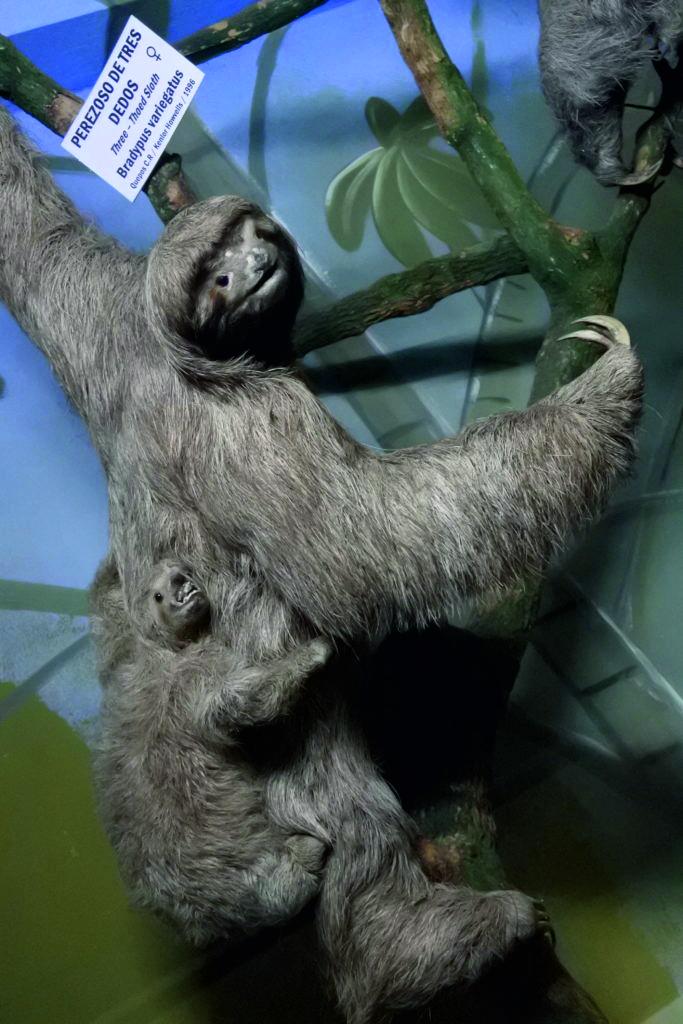
These old representations are not in their best shape at all. Nowadays, taxidermists implement 'mounting' methods, where the animal skins are removed and mounted on light wood or foam structures, and resulting in greater longevity for those pieces.
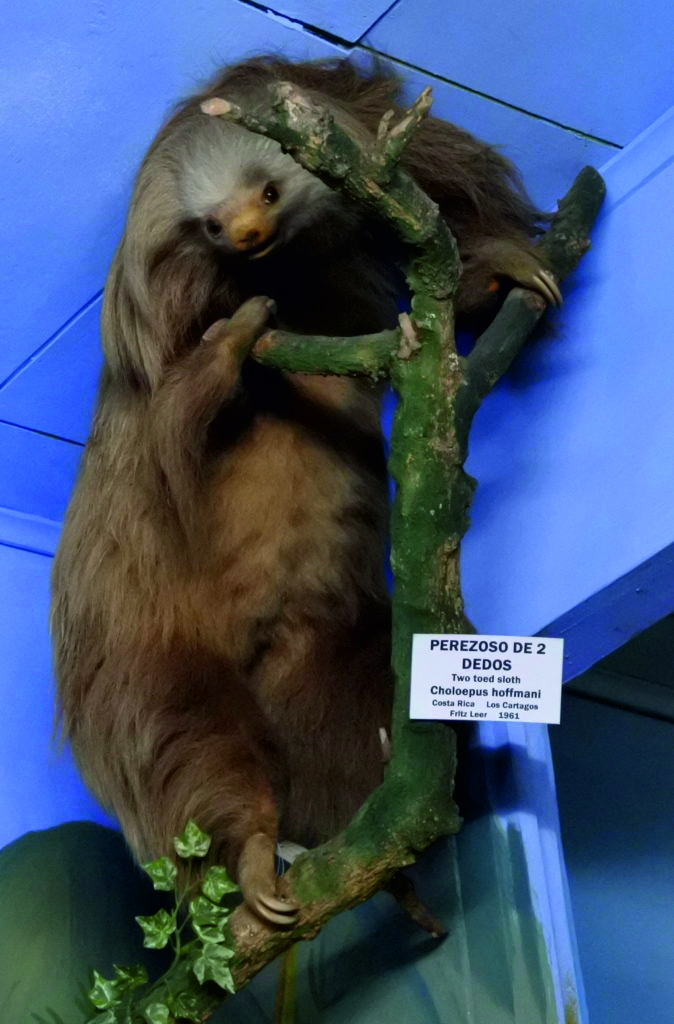
A way to see extinct species
Some taxidermy mounts represent extinct or critically endangered species. The Smithsonian´s National Museum of Natural History house Martha, the last passenger pigeon (Ectopistes migratorius) .
The Harpy eagle (Harpia harpyja) is unfortunately considered extinct and in Costa Rica, only inhabiting isolated regions of Central and South America due to habitat loss.
One of the museums' most impressive taxidermic animals is the Harpy Eagle preying on a two-fingered Sloth (Choloepus Hoffmanni). This is one of the largest eagles on the planet and relies on sloths for their diets.
Sadly, this Harpy Eagle will be the only chance most of us will have to see one. The sloth itself isn't in our top ten worst taxidermic animals, in fact, the body of the sloth is highly accurate. It's the undeniable side-eye that gets us.
-
Read More: Know your sloth predators: the Harpy Eagle
How taxidermy helped Charles Darwin
This form of preserving specimens began in England in the 19th century. Tanning – turning an animal's skin into preserved leather – was common back then. Through these methods, the preservation of cataloged species became possible and was a great tool for naturalists.
On his 1831 voyage on HMSBeagle, Charles Darwin made his famous observations of the beak shape of finches across the Galapagos Islands. He suggested that all had evolved from a common ancestor. Darwin preserved his Galapagos finches using the techniques John Edmonstone – a previously enslaved man from the Guyanas – taught him.
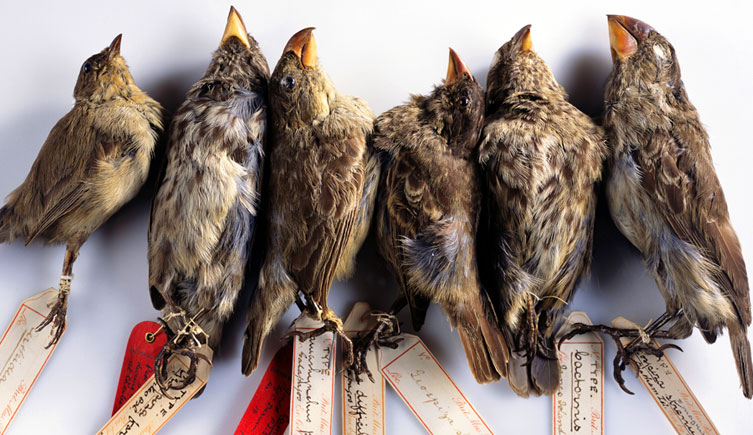
Preserving these specimens was crucial in support of his theory on the evolution of species through natural selection. You can see the specimens collected by Charles Darwin and Captain Fitz Roy at the Natural History Museum in London, England.
Visit and support your local Natural History Museum
While the pictures we show you in this article are not the gold standard of taxidermy, the truth is that Museo La Salle has a great variety of collections. If you're visiting Costa Rica, you might consider spending a morning learning about the animals of this country. To be honest the entomology and mineral exhibits make the visit totally worth it!

Never miss the chance to go to your local Natural History Museum!

Dear sloth lovers: We love You!
At its heart, Valentine's Day is an opportunity to show appreciation for our loved ones. Showering our significant others with shiny boxes of sticky chocolate, heart-shaped candies, and love-struck teddy bears: we share gifts to demonstrate our affection for them.
Gifts that are usually forgotten in a matter of days or weeks.
To SloCo, our "significant others" are our supporters because what they do (what you do) for sloths is truly significant. From our outspoken activists to our generous and consistent donors, you've shown the kind of dedication that we could only dream of at the beginning.
Dreams that your support have turned and continue to make into a reality.
Gifts that last:
Unlike those chocolates that go uneaten, your contributions have lasting effects.
We have seen our Sloth Crossing bridges get used by more animals over time as they continue to get accustomed to them.
Sloth School has taken to the virtual realm, reaching more young activists (thank you Girl Scouts!) and sloth aficionados than ever.
Cecropia trees (a favorite sloth tree) that we planted last year have doubled in size and thanks for your continued engagement so has our reach.
Furthermore, loving sloths and working to protect them benefit a whole host of other species with whom they share their jungle home. The beach almond trees (a favorite staple of the two-fingered sloths) are an essential source of almonds for the critically-endangered Great Green Macaws.
Moreover, these beach dwelling trees help to mitigate coastal erosion thus protecting coral reefs from being smothered with silt. These trees also help to maintain dwindling nesting grounds for the immense leatherback turtles that pull themselves up onto the sand every year to lay their eggs.
These rich coastal ecosystems also help to purify water and are important sanctuaries for the fish that many coastal communities depend upon.
In other words, the love that you've shown for sloths is extended to the whole ecosystem, eventually making its way back to us.
Thanks for being our Valentine!
It's amazing what a little sloth love can do. Thanks to you these sloths can continue to do what they do best – living their best sloth lives. And although sloths may not be the most romantic of animals, you are their Valentine too.
Thanks for continuing to show up for sloths – they may not remember to send flowers but they too are eternally grateful.
Thanks for being our Valentine – we hold you fondly in our hearts.
Sending a Valentine's Day sloth hug your way!
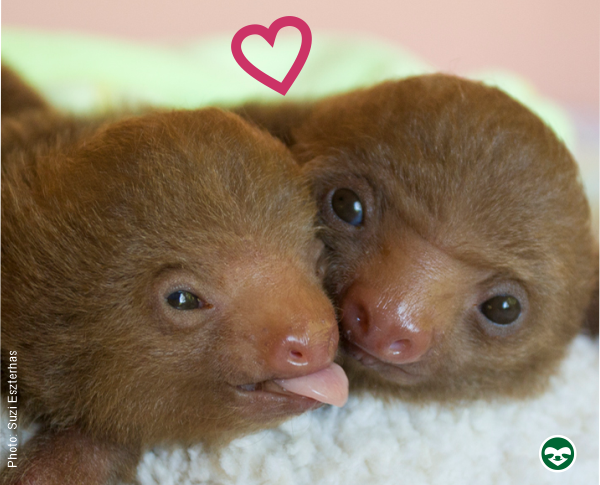
Source: https://slothconservation.org/category/sloth-fun/
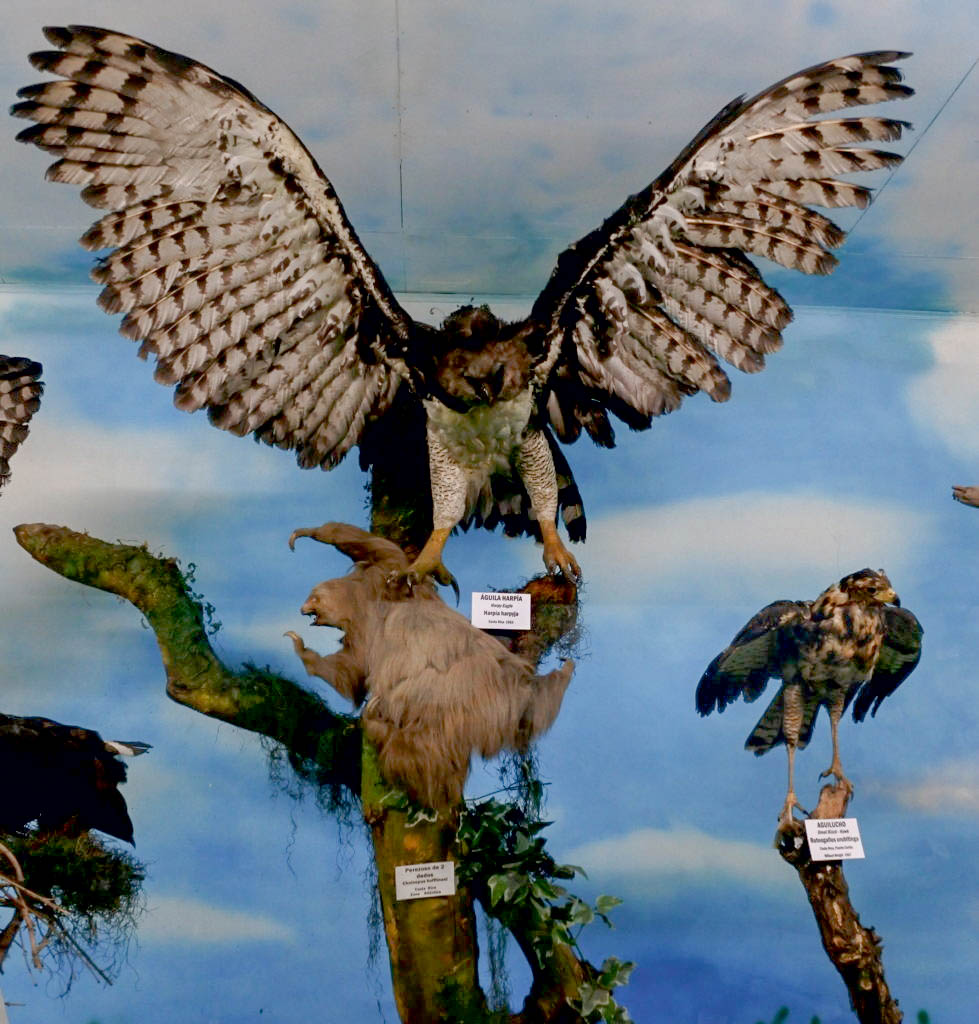



0 Response to "2 Toed Sloth Funny Sloth Memes"
Post a Comment